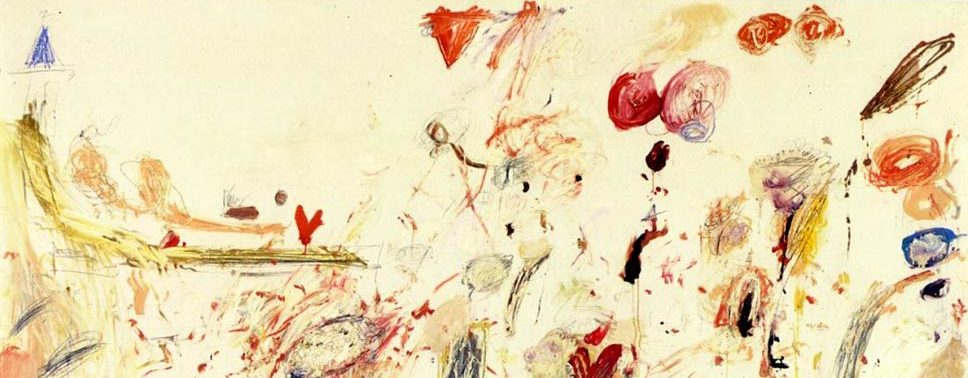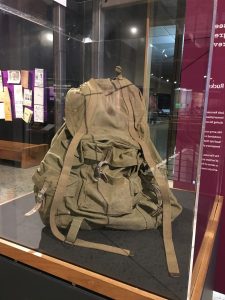Jack Kerouac is among the most famous Beat poets and his work On the Road is considered a defining work of Beat literature. Before my visit of The Dream Machine exhibit, items and objects of Kerouac are what I most want to see and know about.
Coincidentally, among all the books, paperwork and installations, the one came into my sight is a rucksack. It was an old military green rucksack belonged to Jack Kerouac. On the rucksack, “US” is printed on the folding flap. Compared with other paperwork arranged in order, the rucksack was presented in the clear glass alone. I chose it because it is a real object other than words, lines, and paragraphs which can be abstract; it evoked more genuine feeling when I looked at it and tried to understand its meaning in this exhibit. It seemed to be empty because it is still flat even with the support installation. But it is also not empty, it contains full of the beat generation spirits. This single item is titled with a great name “Rucksack revolution.”
This rucksack is an evidence of Kerouac’s travel, as it is introduced there was a note in the pocket of the rucksack that described a bad trip. But no matter how the trip is, to travel means to escape from their society of Beat poets and to explore other culture. The freedom that Beat poets perused seemed to all converge on this rucksack. This inspired me that not only words can be evidence, everything belonged to the poet can mean something and therefore can help explain poems and construct deeper understanding of the poet.
Question left: Is the meaning of travel to Kerouac only about escaping and freedom? How is On the Road related to this rucksack? How to relate comment of critics of the beat generation to this rucksack?
I would read more of Jack Kerouac’s work and other beat poets who were close to Kerouac. Especially I will pay more attention to poem written during the period of his travel and his friends network.

